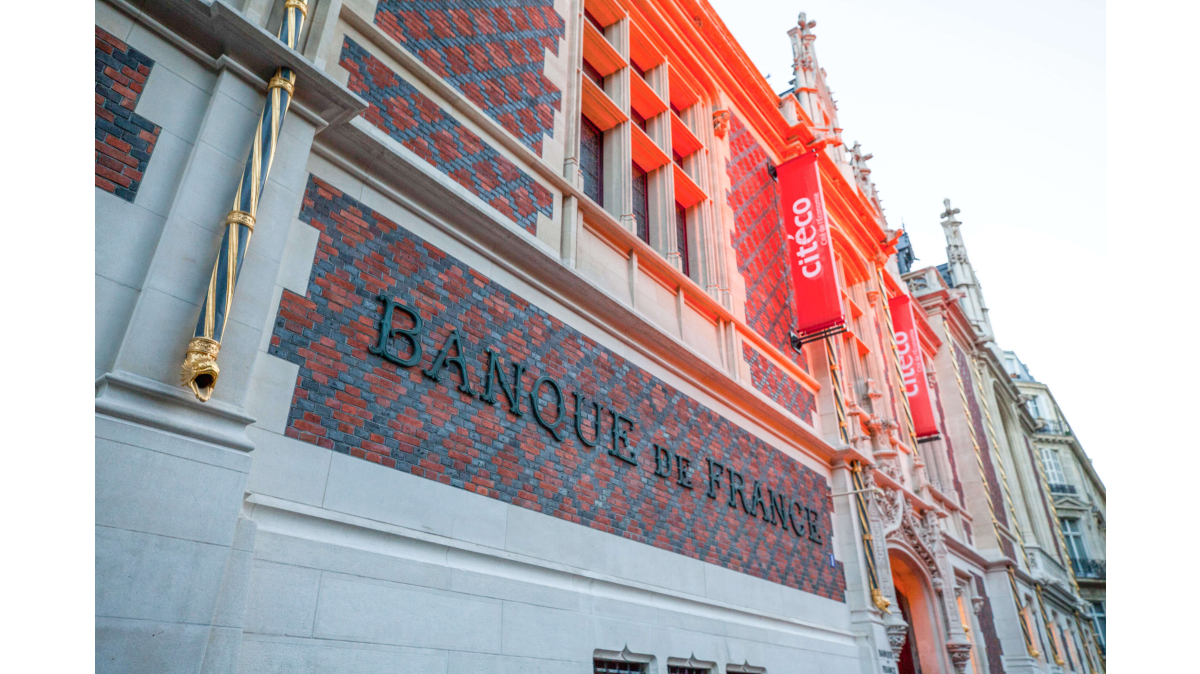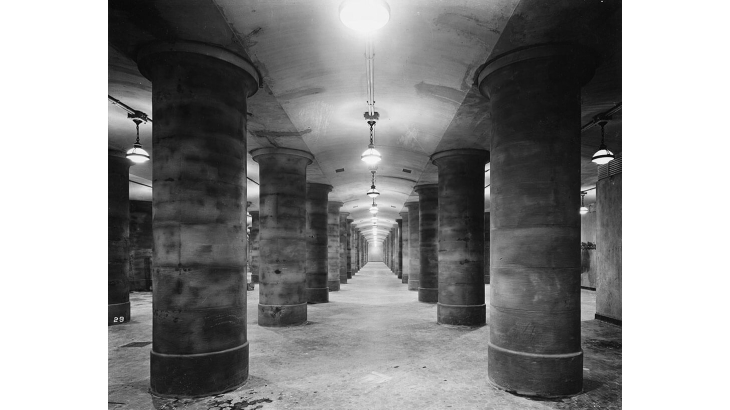The 1870 war and then the Paris Commune disrupted the life of the Banque de France, which nevertheless manages to safeguard its funds

 Le Lab
Le Lab
FinTech BizNews Service
Mumbai, August 25, 2024: Alexandre Stervinou, Director, Cash & Retail Payments Policy and Oversight Directorate, Banque de France, will be speaking at the Global Fintech Fest (GFF) 2024, scheduled for August 28-30, 2024 at Jio World Convention Centre, Mumbai, India. GFF 2024, the fifth edition of the conference, has been scaled up manifold from its previous editions, and has been designed around the theme ‘Blueprint for the next decade of finance: Responsible AI| Inclusive| Resilient.'
According to the website of Banque de France, the central bank of France, drawing on more than 200 years of history, the Banque de France stays abreast of current challenges, while all the time keeping an eye turned to the future. Alongside other central banks in the euro area, the Banque de France ensures the public can have confidence in cash in circulation (euro banknotes and coins) and that cashless means of payment are secure (bank cards, transfers, cheques, electronic money). The Banque de France has an interesting history to know.
The Banque de France in a few dates
1800-1806
The Banque de France becomes a public institution
The Banque de France is founded on 18 January 1800 by a group of bankers at the instigation of the First Consul, Napoleon Bonaparte. As a private company but also a "public bank", its mission is to issue notes payable to bearer on demand in exchange for the discounting of commercial bills. In 1803, it obtains the privilege of issue for Paris: this is the first step towards monopoly of issue and the creation of the first franc germinal banknote. After a financial crisis in 1805, its statutes are changed: the Banque de France is henceforth headed by a Governor and two Deputy Governors appointed by the Head of State.
1806-1870
At the heart of France's commercial and industrial life
In the first half of the 19th century, the Banque de France gradually expands its network by opening offices in the provinces. It has to deal with the political upheavals of the revolutions in 1830 and 1848. In 1848, it obtains a monopoly on banknote issuance throughout France: the departmental banks are absorbed and become branches. During the Franco-Prussian War of 1870, it plays an important role by providing assistance to the Treasury and substantial support to banks and businesses.
1870-1914
Expansion of activities and closer ties with the state
The 1870 war and then the Paris Commune disrupt the life of the Banque de France, which nevertheless manages to safeguard its funds. In the years that follow, the Bank's activities become more clearly defined, and it works increasingly closely with the Treasury: centralisation of state revenues, transportation of coins, observation of the economic situation, etc. Before the First World War, the Banque de France builds up substantial gold reserves to prepare for the conflict.
1914-1918
Contribution to the war effort
During the Great War, there is close cooperation between the government and the Banque de France: the Banque de France provides assistance in the issuance of successive national defence bonds. Through its branch network, the Banque de France plays an active role in the government's campaign to collect gold hoarded by private individuals. These actions enhance the Banque de France's image and cement its status as a central bank.
1939-1945
From the Occupation to nationalisation
In 1936, the Banque de France is given new statutes that place its General Council under the control of the state. On the eve of the war, the gold held by the Banque de France, both in Paris and in its branches, is sent overseas. When the Germans enter the capital, the Banque de France is occupied and has to handle the state’s “occupation payments” to Germany.
After the Liberation, the Banque de France is nationalised by the act of 2 December 1945. It plays an active role in the reconstruction programme and cooperates with other central banks. In the years that follow, it also plays a major role in efforts to create a European monetary union.
1999-2002
Joining the Eurosystem and changeover from the franc to the euro
As a key player in the modernisation of France and Europe's economic structures, the Banque de France is granted independence under the Law of 4 August 1993 in defining and implementing monetary policy. In 1998 it becomes a member of the European System of Central Banks (ESCB) and one of the main shareholders of the European Central Bank (ECB). It subsequently joins the Eurosystem with the creation of the euro on 1 January 1999. It thus participates in the management of the single currency of more than 300 million Europeans.
Today
An independent and trusted institution serving the people of France and Europe
As the French pillar of the Eurosystem, the Banque de France is the guardian of monetary strategy and financial stability, while also providing essential services to the economy and society. Drawing on more than 200 years of history, the Banque de France stays abreast of current challenges, while all the time keeping an eye turned to the future.
The underground vault – a subterranean fortress

The underground vault
A place of legend like Fort Knox in the United States, the underground vault is a space buried deep beneath the Hôtel de Toulouse that has housed the Banque de France's gold reserves since 1927.
In 1932, Austrian writer Stefán Zweig was fascinated by the mysterious gold reserves of the Banque de France. He finally obtained exceptional permission to visit La Souterraine, a vault spanning one hectare and built 27 metres below ground. He wrote a travelogue about his visit, which was adapted into a film by Marie Laurence Delaunay.
The strongroom of the Hôtel Gaillard
In this former branch of the Banque de France, now the Citéco museum, this extraordinary room lined with thousands of safes is protected by a moat and a drawbridge.
A 222-year-old start-up
Since its founding, the Banque de France has always kept pace with France and Europe's economic development: faithful to its missions, combining continuity with adaptation to present-day challenges, it has always endeavoured to look to the future. Its rich heritage attests to its commitment to innovation in all its activities.
Le Lab – a space dedicated to experimentation and innovation
Le Lab is an open innovation centre set up by the Banque de France to support its missions and activities. It develops ties with external innovators and seeks to involve them in its experiments.
We are France’s central bank
The Banque de France is an independent institution of the French Republic that has guarded the nation’s currency and financial system for over two hundred years.
Today, as a member of the Eurosystem, the Banque de France provides a public service to French and European citizens by ensuring the smooth financing of the economy and the stability of prices.
Day in, day out, the men and women at the Banque de France, devise and implement monetary strategy, maintain financial stability and serve the economy and society. Their mission is to secure the nation’s future by creating conditions conducive to growth and employment.
(Details based on the website of Banque de France https://www.banque-france.fr/en/banque-de-france )